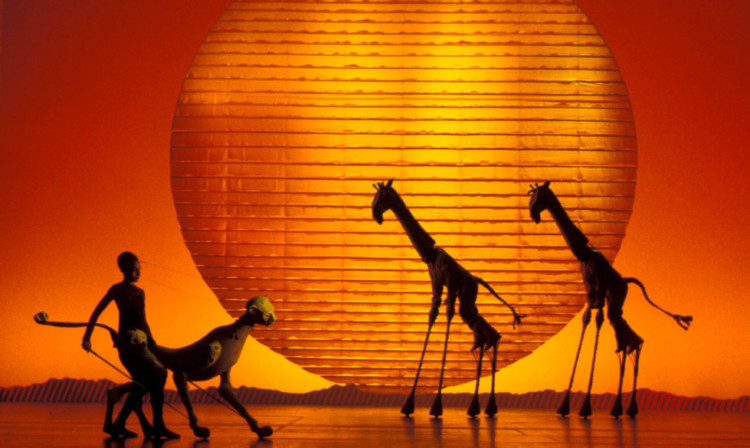
Edinburgh Playhouse transformed into a jungle as Disney’s global theatre phenomenon comes to town.
Backstage is a hive of activity. Make-up is being applied, masks are adjusted, last-minute repairs are made to puppets and dancers take to stilts as they’re transformed into giraffes.
More than 50 performers prepare to burst onto the stage and 100 crew work non-stop in the background to pull off the show that was once described as “impossible to turn into a stage production”. Instead The Lion King became a global phenomenon that changed theatre for ever and this week it roars into Scotland for the first time.
In venues around the world, audiences have laughed as they watch birds fly over their heads, gasped as a 13ft elephant trundles down the aisle and shrieked as wildebeest stampede. But that stampede is nothing compared to the charge for tickets as people snap up seats to see Edinburgh’s Playhouse transformed into a jungle.
From Friday, the Disney production which has played to 70 million people across five continents, will make the capital its home for 14 weeks. By the time it leaves in January, more than 300,000 people will have seen the Scottish leg of the show.
Disney’s director of marketing and creative, Stephen Crocker, was the man who believed the hit 1994 animation about cub Simba’s rise to his kingdom’s throne wouldn’t work for the stage.
“The idea for the show came almost at the same time as the film came out. We’d just put Beauty and the Beast on stage and were looking for the next production,” he told The Sunday Post.
“The Lion King was instantly iconic. But I didn’t understand how we could do it for the stage it seemed impossible.
“Then director Julie Taymor came along with a concept of how to create this world on stage and spent three years developing the idea. She used her incredible imagination to represent fish, elephants, ants and so many other animals and creatures on stage.
“What Julie created is so much more remarkable because it wasn’t easy or obvious. When she came up with the idea of using puppets and masks, every single animal had to be represented differently.”
That’s a feat in itself, with 26 types of animals represented. So it was no surprise when Julie made Broadway history by becoming the first woman to win the Tony Award for Best Director of a Musical.
Since those days 16 years ago in New York, the production has been to 21 countries. Stephen promises the touring version visiting Scotland is in no way a diluted form of the show.
“People think a touring production will be smaller, but it’s just the same as what would be seen on opening night in London or Broadway.
Included in the 21 trucks that transport everything from theatre to theatre are the 232 puppets used in the show. Such is the draw of The Lion King that cities vie for the production, knowing it will bring millions to the local economy.
“Hotels, shops, restaurants and public transport in Edinburgh will all benefit. We’re just desperate to have the first audience in there now and get started. The show will look great in that big theatre.
“It’s so gratifying to see just how much people still love the show.”

Enjoy the convenience of having The Sunday Post delivered as a digital ePaper straight to your smartphone, tablet or computer.
Subscribe for only £5.49 a month and enjoy all the benefits of the printed paper as a digital replica.
Subscribe